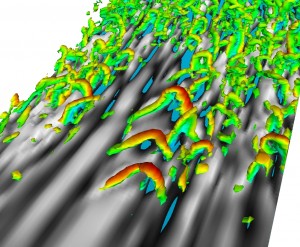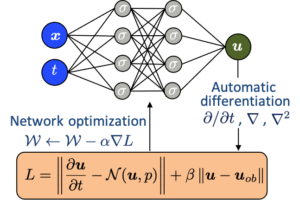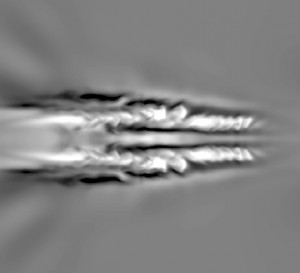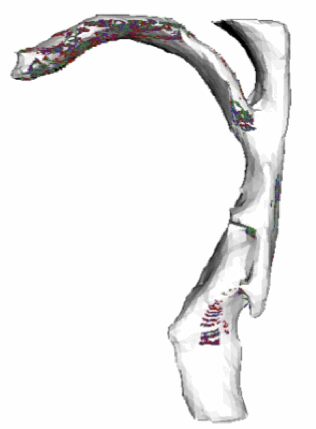 |
TransitionIn many fluid flows, transition of boundary layers from laminar to turbulence is forced by free-stream perturbations. This phenomenon is called Bypass Transition. In this project, the mechanics of bypass transition are investigated using direct numerical simulations and stability theory. The influence of a full spectrum of perturbations, and also particular vortical modes, on boundary layer stability are investigated. |
Data assimilation
|
 |
Physics-based machine learningOur group develops machine-learning algorithms to solve challenging fluid dynamical problems. Our algorithms are predictive, seamlessly integrate data and physical laws, and have been applied to a wide range of problems including transitional shear flows, turbulence, and hypersonic flows. |
 |
 |
ViscoelasticyViscoelastic fluids often behave in a manner that defies our fluid dynamical intuition. For example, they can sustain a chaotic flow state even in the limit of vanishing Reynolds numbers, and in the opposite limit of high Reynolds numbers they can significantly tame turbulence and reduce drag. In this project, we examine the evolution of disturbances in viscoelastic fluids across flow regimes. When intriguing new dynamics are observed, we provide the theory to explain the role of elasticity. |
TurbomachineryUnder adverse pressure gradient conditions, boundary layers can undergo separation, thus significantly increasing viscous losses and reducing lift. In turbomachinery, for example, it is desirable to delay or completely suppress separation. |
 |
Two-fluid shear flowsThe stability characteristics of two-fluid flows are significantly affected by the presence of the two-fluid interface. Interfacial waves, as well as other types of instability modes may arise and lead to deformation of the interface, the formation of interfacial ligaments, and droplet breakup and entrainment. |
 |
 |
Bio-flows: Inhaled-drug deliveryThe flow and the transport of particles in the human respiratory system dictate the effectiveness of therapeutic aerosols used in inhaled drug delivery. Therefore, knowledge of the particle deposition in the mouth/throat region is critical in the design of effective inhalation devices for optimum delivery to the lungs.In collaboration with GlaxoSmithKline, we are developing validated numerical simulations techniques for flow and particle deposition in the upper respiratory tract. These methods offer a non-invasive and cost-effective alternative to in vivo and in vitro tests. |
